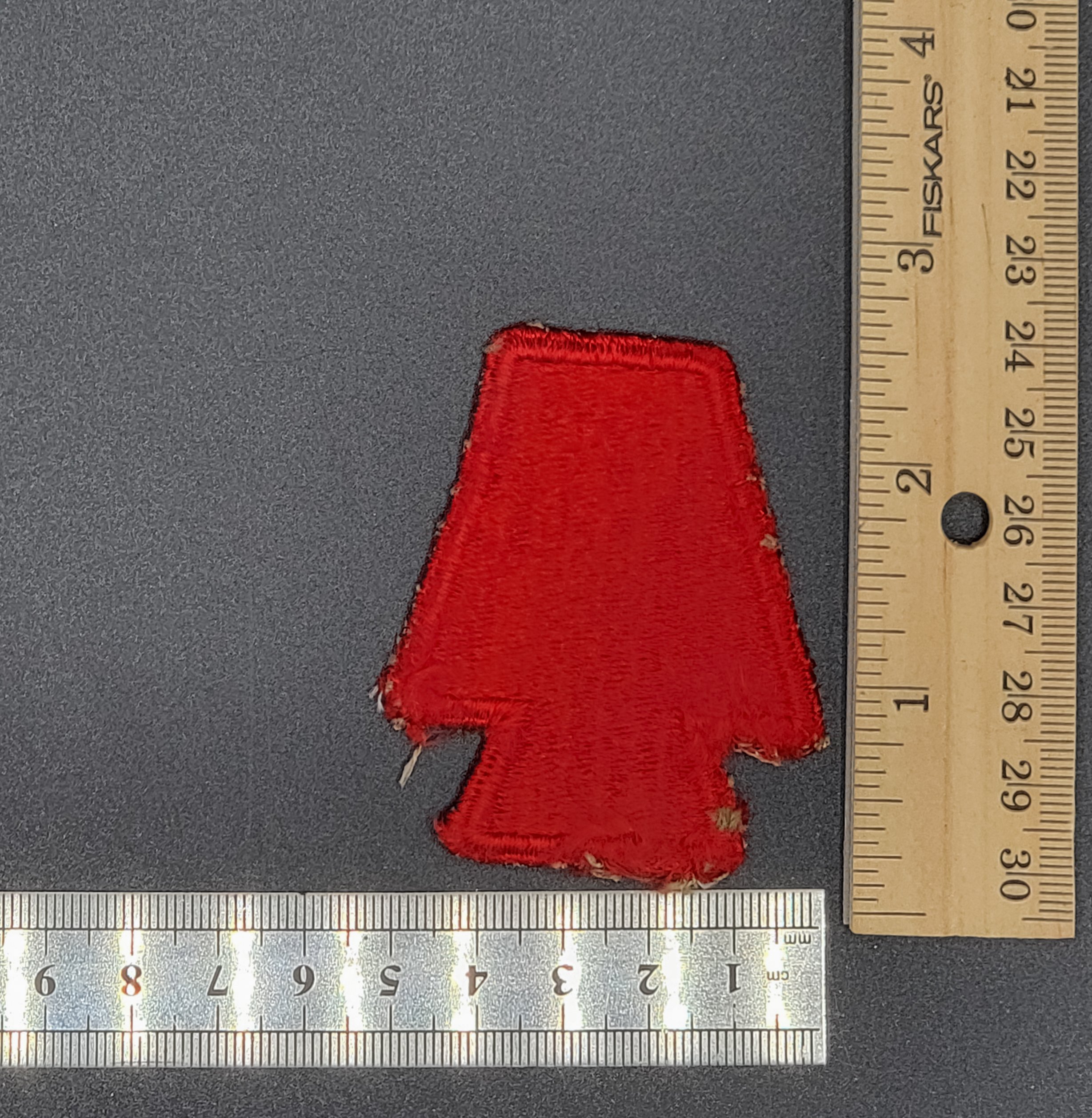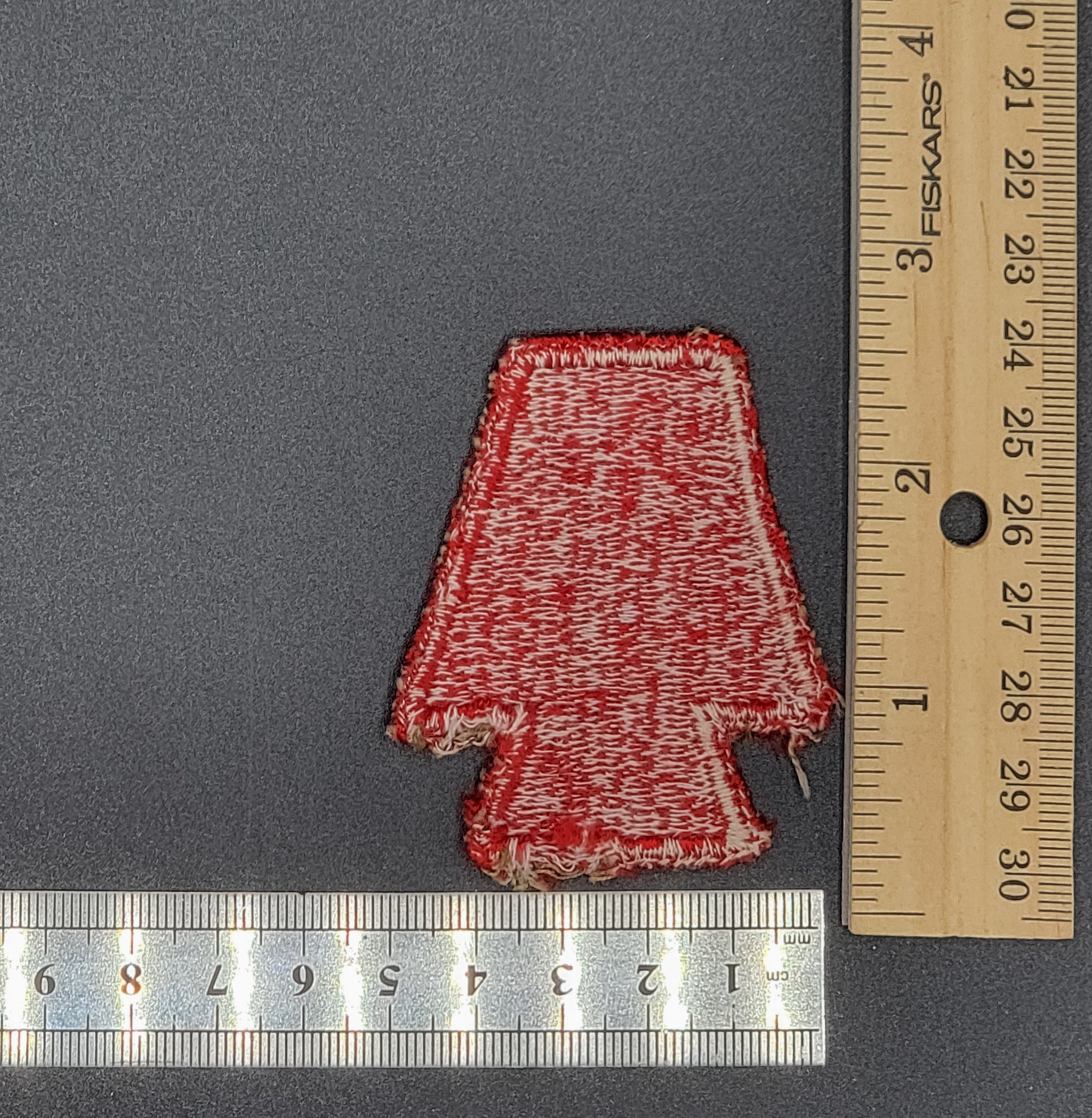28th Infantry Division "Keystone"
The 28th Infantry Division pushed east towards the French capital of Paris through the Bocage, its roads littered with abandoned tanks and bloated, stinking corpses of men and animals. In little more than a month after landing at the Normandy beachhead, as part of the Allied invasion of Normandy, the men of the 28th entered Paris and were given the honor of marching down the Champs-Elysées on 29 August 1944 in the hastily arranged Liberation of Paris.
After enjoying a brief respite, absorbing replacements of men and equipment, the division, now commanded by Brigadier General Norman Cota, formerly the Assistant Division Commander (ADC) of the 29th Infantry Division, headed to the German defensive Westwall.
A small night patrol of the 109th Infantry began the division's protracted struggle on the Siegfried Line on the dragon's teeth infested Westwall. The patrol crossed the Our River by bridge from Weiswampach, Luxembourg into Sevenig (Our), Germany, making it the first of the Allied armies to reach German soil. The 28th suffered extremely heavy casualties that autumn in the costly and ill-conceived Battle of Hürtgen Forest (19 September to 16 December 1944); the divisional history conceded "the division accomplished little" in the battle. The campaign was the longest continuous battle the U.S. Army fought in World War II. Finally, a tenuous line along the Our River and Sauer River was held at the end of November, only to be abruptly broken by two panzer divisions, three infantry divisions and one parachute division (including the 352nd Infantry Division and the 5th Parachute Division) in an infantry-tank attack on the "Ridge Road" just west of the Our River on 16 December.
The Ardennes Offensive was launched along the entire divisional front by the 5th Panzer Army led by General der Panzertruppe Hasso von Manteuffel. The 28th, which had sustained heavy casualties in the First Army drive to the Roer, fought doggedly in place using all available personnel and threw off the enemy timetable before withdrawing to Neufchâteau on 22 December for reorganization, as its units had been badly mauled.
At the end of November 1944 a German "pocket" of resistance formed in the French Alsace region centered in the city of Colmar. The Colmar Pocket consisted of a strength of eight German divisions and a brigade of Panzer tanks. Combined forces of French and American armies were initially unsuccessful in closing this pocket.
The 28th Infantry Division pushed east towards the French capital of Paris through the Bocage, its roads littered with abandoned tanks and bloated, stinking corpses of men and animals. In little more than a month after landing at the Normandy beachhead, as part of the Allied invasion of Normandy, the men of the 28th entered Paris and were given the honor of marching down the Champs-Elysées on 29 August 1944 in the hastily arranged Liberation of Paris.
After enjoying a brief respite, absorbing replacements of men and equipment, the division, now commanded by Brigadier General Norman Cota, formerly the Assistant Division Commander (ADC) of the 29th Infantry Division, headed to the German defensive Westwall.
A small night patrol of the 109th Infantry began the division's protracted struggle on the Siegfried Line on the dragon's teeth infested Westwall. The patrol crossed the Our River by bridge from Weiswampach, Luxembourg into Sevenig (Our), Germany, making it the first of the Allied armies to reach German soil. The 28th suffered extremely heavy casualties that autumn in the costly and ill-conceived Battle of Hürtgen Forest (19 September to 16 December 1944); the divisional history conceded "the division accomplished little" in the battle. The campaign was the longest continuous battle the U.S. Army fought in World War II. Finally, a tenuous line along the Our River and Sauer River was held at the end of November, only to be abruptly broken by two panzer divisions, three infantry divisions and one parachute division (including the 352nd Infantry Division and the 5th Parachute Division) in an infantry-tank attack on the "Ridge Road" just west of the Our River on 16 December.
The Ardennes Offensive was launched along the entire divisional front by the 5th Panzer Army led by General der Panzertruppe Hasso von Manteuffel. The 28th, which had sustained heavy casualties in the First Army drive to the Roer, fought doggedly in place using all available personnel and threw off the enemy timetable before withdrawing to Neufchâteau on 22 December for reorganization, as its units had been badly mauled.
At the end of November 1944 a German "pocket" of resistance formed in the French Alsace region centered in the city of Colmar. The Colmar Pocket consisted of a strength of eight German divisions and a brigade of Panzer tanks. Combined forces of French and American armies were initially unsuccessful in closing this pocket.
The 28th Infantry Division pushed east towards the French capital of Paris through the Bocage, its roads littered with abandoned tanks and bloated, stinking corpses of men and animals. In little more than a month after landing at the Normandy beachhead, as part of the Allied invasion of Normandy, the men of the 28th entered Paris and were given the honor of marching down the Champs-Elysées on 29 August 1944 in the hastily arranged Liberation of Paris.
After enjoying a brief respite, absorbing replacements of men and equipment, the division, now commanded by Brigadier General Norman Cota, formerly the Assistant Division Commander (ADC) of the 29th Infantry Division, headed to the German defensive Westwall.
A small night patrol of the 109th Infantry began the division's protracted struggle on the Siegfried Line on the dragon's teeth infested Westwall. The patrol crossed the Our River by bridge from Weiswampach, Luxembourg into Sevenig (Our), Germany, making it the first of the Allied armies to reach German soil. The 28th suffered extremely heavy casualties that autumn in the costly and ill-conceived Battle of Hürtgen Forest (19 September to 16 December 1944); the divisional history conceded "the division accomplished little" in the battle. The campaign was the longest continuous battle the U.S. Army fought in World War II. Finally, a tenuous line along the Our River and Sauer River was held at the end of November, only to be abruptly broken by two panzer divisions, three infantry divisions and one parachute division (including the 352nd Infantry Division and the 5th Parachute Division) in an infantry-tank attack on the "Ridge Road" just west of the Our River on 16 December.
The Ardennes Offensive was launched along the entire divisional front by the 5th Panzer Army led by General der Panzertruppe Hasso von Manteuffel. The 28th, which had sustained heavy casualties in the First Army drive to the Roer, fought doggedly in place using all available personnel and threw off the enemy timetable before withdrawing to Neufchâteau on 22 December for reorganization, as its units had been badly mauled.
At the end of November 1944 a German "pocket" of resistance formed in the French Alsace region centered in the city of Colmar. The Colmar Pocket consisted of a strength of eight German divisions and a brigade of Panzer tanks. Combined forces of French and American armies were initially unsuccessful in closing this pocket.

